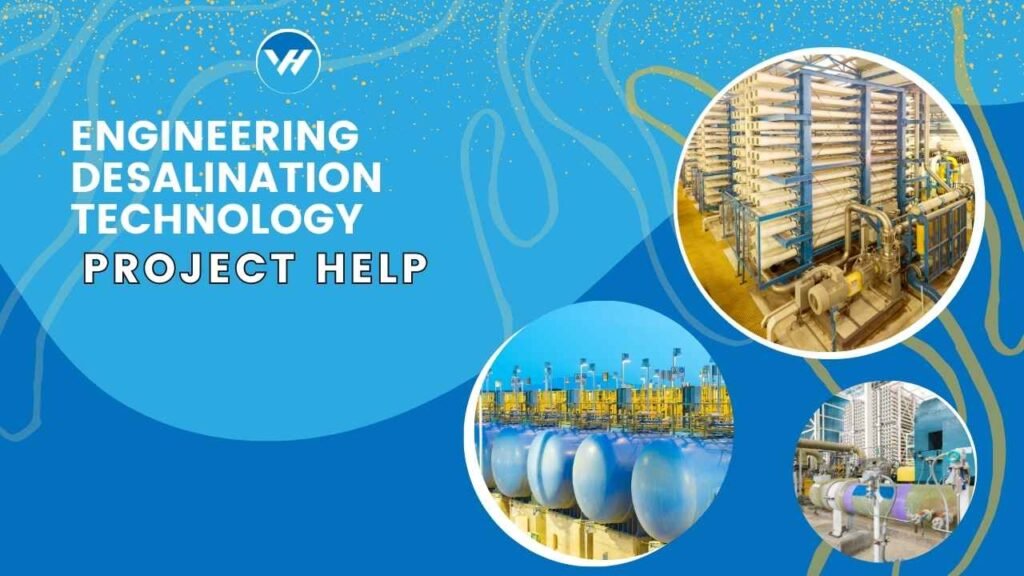Hey there! Have you ever wondered how we turn salty seawater into fresh, drinkable water? It’s all thanks to desalination technology, a crucial engineering feat that addresses the growing global water crisis. In this article, we’ll dive deep into desalination technology, explore its various methods, and understand how you can get expert help for your desalination projects. Ready? Let’s get started!

Table of Contents
ToggleWhat is Desalination?
Desalination is the process of removing salts and other impurities from seawater or brackish water to produce fresh water. This technology has been around for centuries, but modern advancements have made it more efficient and widely used. The main goal? To provide fresh water in regions where freshwater sources are scarce or overused.
Types of Desalination Technologies
Reverse Osmosis (RO)
Reverse osmosis is one of the most popular desalination methods. It involves pushing seawater through a semi-permeable membrane that filters out salts and impurities.
How RO Works:
- Seawater is pre-treated to remove large particles.
- It is then pumped at high pressure through the RO membrane.
- Freshwater is collected on the other side of the membrane, leaving salts and impurities behind.
Advantages and Disadvantages:
- Advantages: Highly efficient, produces high-quality water.
- Disadvantages: High energy consumption, membrane fouling.
Multi-Stage Flash (MSF)
Multi-stage flash distillation involves heating seawater and then rapidly cooling it to produce freshwater.
How MSF Works:
- Seawater is heated to a high temperature.
- It is then passed through multiple stages where it is flashed into steam.
- The steam is condensed into freshwater.
Advantages and Disadvantages:
- Advantages: Robust and reliable, low maintenance.
- Disadvantages: High energy consumption, large footprint.
Multi-Effect Distillation (MED)
Multi-effect distillation uses multiple stages of evaporation and condensation to desalinate water.
How MED Works:
- Seawater is heated and evaporated in multiple stages.
- Each stage uses the heat from the previous stage to evaporate more water.
- The vapor is condensed into freshwater.
Advantages and Disadvantages:
- Advantages: More energy-efficient than MSF, scalable.
- Disadvantages: Complex operation, high initial cost.
Electrodialysis (ED)
Electrodialysis uses an electric field to separate salts from water through ion-exchange membranes.
How ED Works:
- Seawater flows between alternating cation and anion exchange membranes.
- An electric field drives the ions through the membranes, leaving freshwater behind.
Advantages and Disadvantages:
- Advantages: Lower energy consumption for brackish water, effective for specific applications.
- Disadvantages: Less effective for seawater, requires high maintenance.
The Importance of Desalination Projects
Desalination projects play a vital role in addressing water scarcity, especially in arid regions and islands. They provide a reliable source of fresh water, reduce dependence on overused freshwater sources, and support economic growth by ensuring water availability for various sectors.
Key Components of Desalination Projects
Intake and Pre-treatment
Before the desalination process begins, seawater is collected through intake systems and undergoes pre-treatment to remove large particles and organisms.
Desalination Process
The pre-treated water is then subjected to the desalination process, which varies depending on the technology used (RO, MSF, MED, or ED).
Post-treatment and Distribution
After desalination, the freshwater undergoes post-treatment to adjust pH levels and add necessary minerals. It is then distributed to consumers.
Energy Requirements
Desalination processes are energy-intensive, making energy efficiency a critical factor in project design and implementation.
Engineering Challenges in Desalination Projects
Energy Consumption
One of the biggest challenges is the high energy requirement, especially for processes like RO and MSF. Engineers are constantly seeking ways to reduce energy consumption through innovations and renewable energy sources.
Cost Factors
The initial setup and operational costs of desalination plants can be high. Engineers must balance cost efficiency with the need for reliable and sustainable water production.
Environmental Concerns
Desalination projects can impact marine life and ecosystems, primarily due to the intake and discharge processes. Engineers must design solutions that minimize these impacts and ensure environmental sustainability.
Innovations in Desalination Technology
Solar-Powered Desalination
Solar energy is being harnessed to power desalination plants, reducing reliance on fossil fuels and lowering carbon footprints.
Forward Osmosis
Forward osmosis is an emerging technology that uses natural osmotic pressure to desalinate water, requiring less energy than traditional methods.
Hybrid Systems
Combining different desalination technologies can enhance efficiency and reduce costs. Hybrid systems leverage the strengths of each method to optimize water production.
The Role of Engineers in Desalination Projects
Project Design and Planning
Engineers are responsible for designing desalination plants that are efficient, cost-effective, and environmentally sustainable.
Implementation and Maintenance
From construction to ongoing maintenance, engineers ensure that desalination plants operate smoothly and reliably.
Continuous Improvement
Engineers continually seek ways to improve desalination technologies, making them more efficient and less impactful on the environment.
Getting Help with Your Desalination Technology Project
Importance of Expert Assistance
Desalination projects are complex and require specialized knowledge. Seeking expert help ensures your project is well-designed and executed.
How Virtual Help Can Assist
Virtual Help is an online platform that connects you with tutors and experts in desalination technology. Whether you need help with project design, implementation, or troubleshooting, Virtual Help has you covered.
Features of the Virtual Help Platform
- Access to experienced professionals
- Flexible scheduling and availability
- Affordable and convenient solutions
Virtual Help: Your Partner in Desalination Technology Projects
Overview of the Virtual Help Platform
Virtual Help offers an iOS and Android app that allows students and professionals to find tutors and get assignment help in various fields, including desalination technology.
How to Find Tutors and Experts
Simply download the Virtual Help app, create an account, and search for experts in desalination technology. You can schedule sessions at your convenience and get the assistance you need.
Benefits of Using Virtual Help
- Personalized support tailored to your project needs
- Access to a wide range of experts
- Easy-to-use platform with 24/7 availability
Conclusion
Desalination technology is a game-changer in addressing global water scarcity. From reverse osmosis to innovative hybrid systems, engineers play a crucial role in making these projects successful. If you’re working on a desalination project, don’t hesitate to seek expert help through Virtual Help. Their platform connects you with knowledgeable professionals who can guide you every step of the way.
FAQs
What are the main types of desalination technologies?
The main types of desalination technologies include Reverse Osmosis (RO), Multi-Stage Flash (MSF), Multi-Effect Distillation (MED), and Electrodialysis (ED).
How does reverse osmosis work in desalination?
Reverse osmosis works by pushing seawater through a semi-permeable membrane that filters out salts and impurities, producing freshwater.
What are the environmental impacts of desalination projects?
Desalination projects can impact marine life and ecosystems, primarily due to the intake and discharge processes. Engineers strive to design solutions that minimize these impacts.
How can I find expert help for my desalination project?
You can find expert help for your desalination project through Virtual Help, an online platform that connects you with tutors and professionals in various fields.
Why should I use Virtual Help for my desalination technology project?
Virtual Help offers personalized support, access to a wide range of experts, and a user-friendly platform available 24/7, making it an ideal choice for getting assistance with your desalination technology project.





